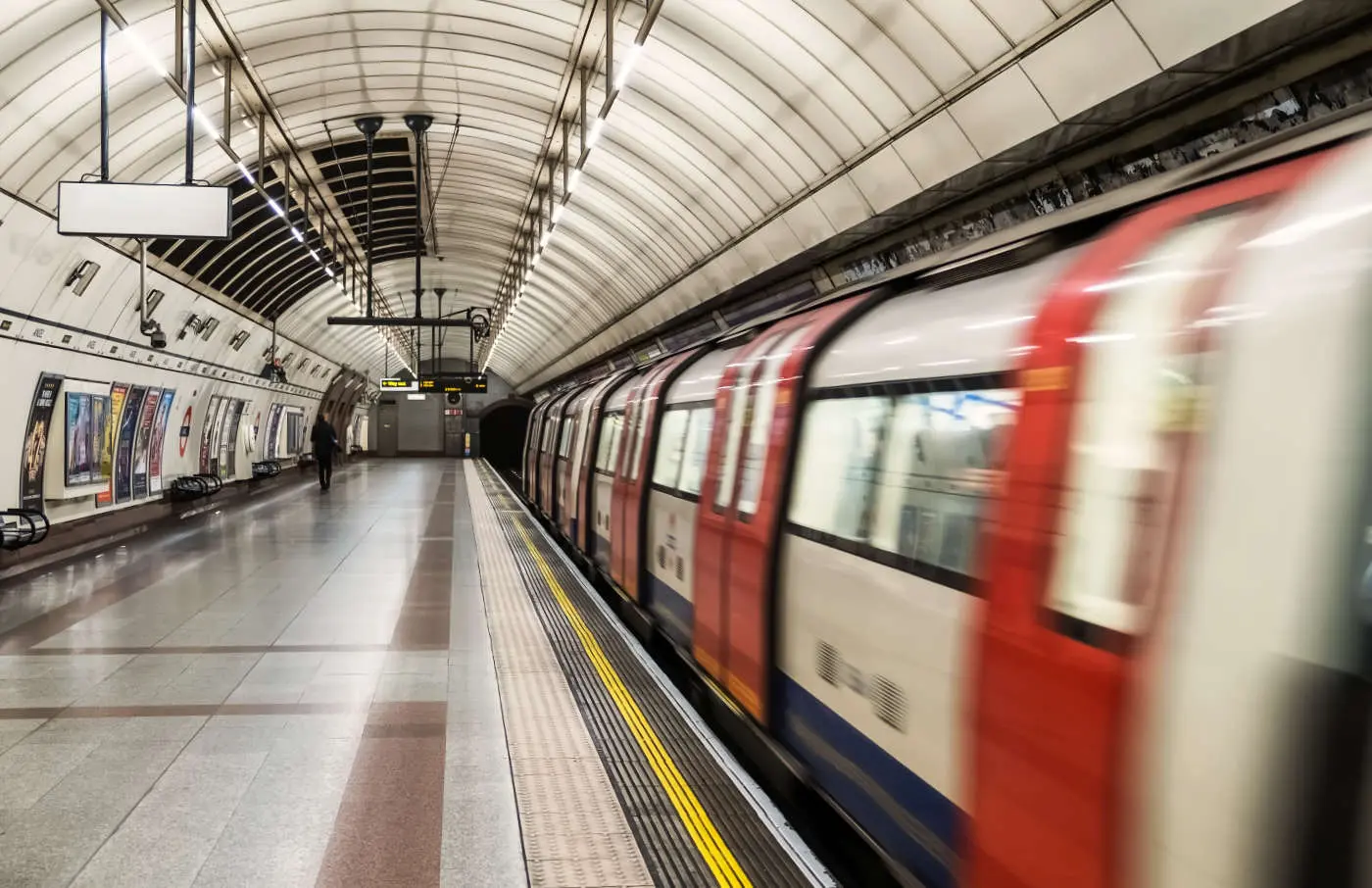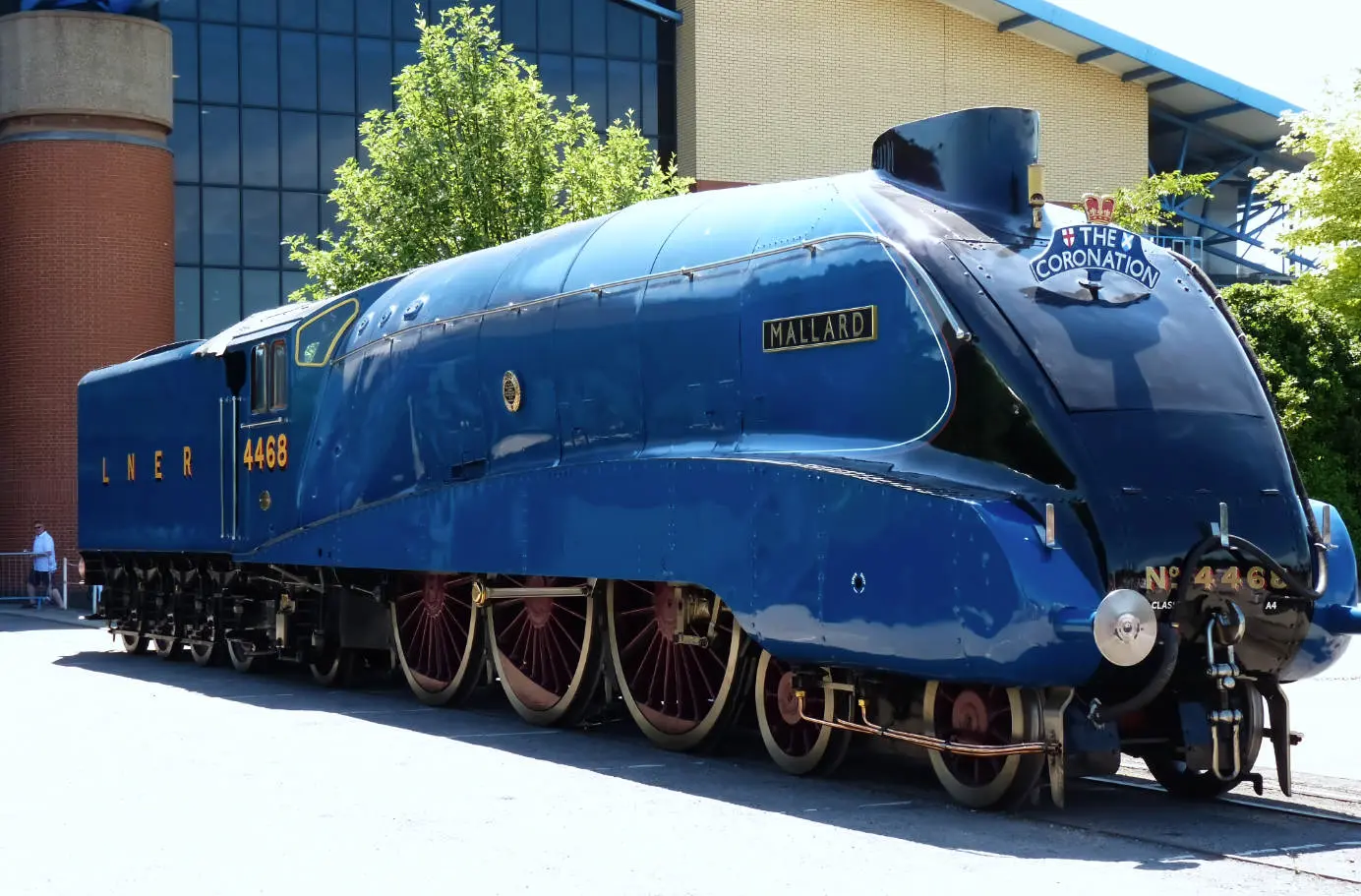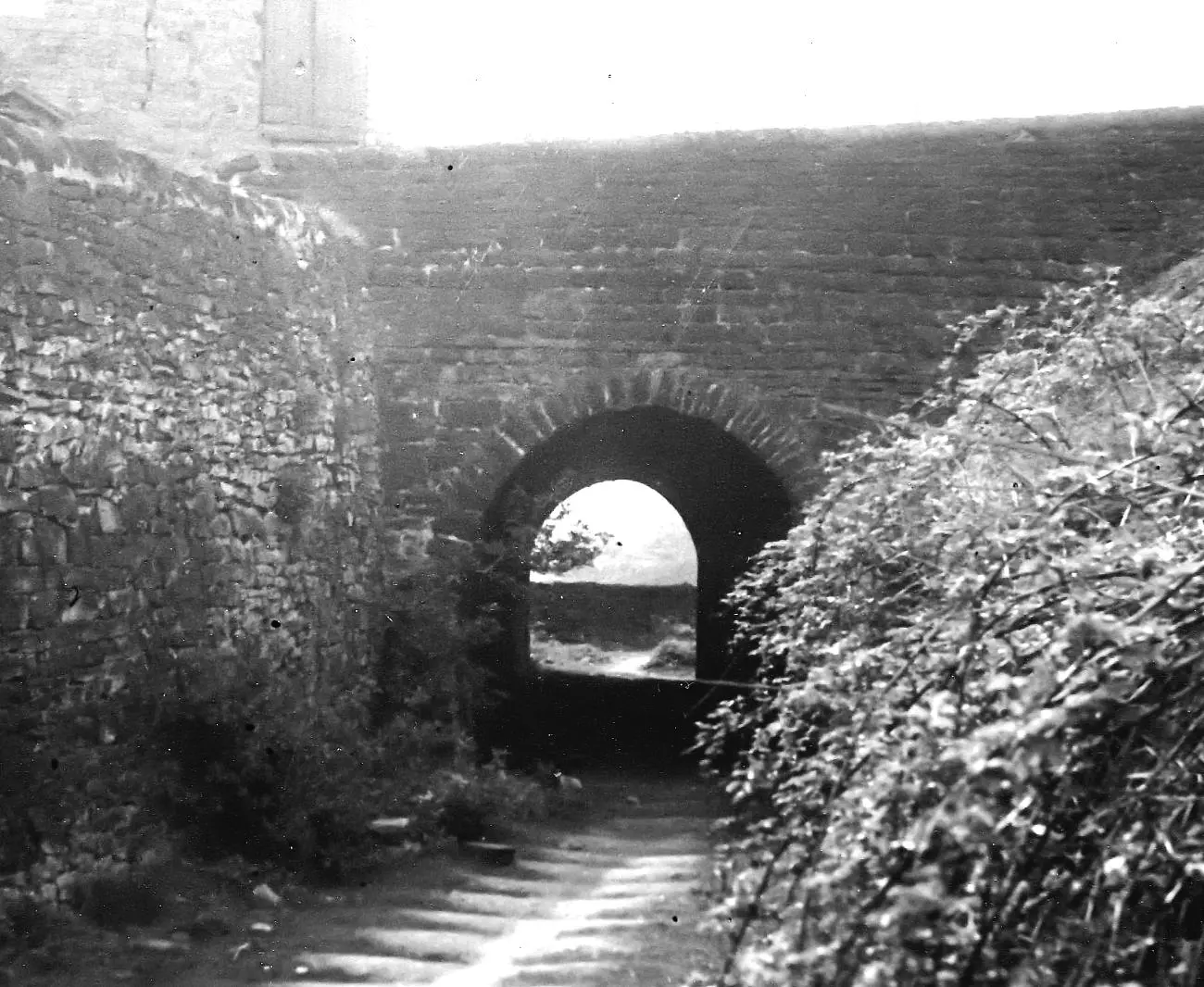Exploring the History of Berlin's U-Bahn
Explore the fascinating history of the Berlin U-Bahn, from its inception to its growth and development over the years. Learn about the evolution of this iconic subway system.

Berlin's U-Bahn is not just a mode of transportation but a testament to the city's resilience and growth. The rich history of the Berlin U-Bahn dates back over a century and offers a window into the socio-political changes that have shaped the German capital.
From its early days of conception to the modern-day marvel it is today, the U-Bahn stands as a symbol of Berlin's dynamic past and vibrant present. As we delve into the fascinating narrative of the Berlin U-Bahn history, we'll uncover its evolution through wars, reconstruction, and reunification, leading to the technological advancements of today.
About the Berlin U-Bahn
The U-Bahn, or Untergrundbahn (underground train), is the backbone of Berlin's public transport system. Operating since the early 20th century, it has grown to encompass nine lines that traverse 147 kilometers (91.5 miles) and connect 173 stations across Berlin. This network plays a crucial role in the daily lives of millions, providing efficient and reliable transport through the city's bustling neighborhoods and historic districts. The U-Bahn is known for its punctuality, frequent service, and ability to handle high passenger volumes, making it a preferred mode of transit for both residents and visitors.
In addition to its functional role, the U-Bahn is celebrated for its unique blend of architectural styles and public art installations. From the ornate designs of older stations to the sleek, modern aesthetics of newer ones, the U-Bahn offers a visual journey through Berlin's architectural evolution. The network's integration of art, with murals and sculptures adorning many stations, transforms everyday commutes into culturally enriching experiences. The U-Bahn is more than just a transportation system; it is a symbol of Berlin's innovation, resilience, and cultural richness, reflecting the city's vibrant spirit and dynamic history.
The Early Years of Berlin's U-Bahn
The inception of Berlin's U-Bahn was rooted in the late 19th century when the city sought solutions to its burgeoning traffic problems. As Berlin's population swelled due to industrial growth, the need for an efficient urban transport system became evident. By 1931, the U-Bahn had significantly expanded, boasting a network that spanned 76 kilometers and catered to 265.5 million passengers annually. This period marked the foundation of a transport system that would become integral to Berlin's urban life. The early planning involved considerable debate about the most effective routes and technology to adopt. Engineers and city planners drew inspiration from the underground systems in London and New York, ultimately deciding on an electric-powered railway to navigate the city's dense urban landscape.

The construction of the first line began in 1896, following years of negotiations and planning. By 1902, the initial section of the U-Bahn was completed, connecting Stralauer Tor to Potsdamer Platz. This development was met with great public enthusiasm, as it provided a faster and more reliable alternative to the congested streets above. As the network grew, it played a crucial role in shaping the city's urban environment and accommodating its rapid expansion.
The U-Bahn quickly became a symbol of modernity and progress in Berlin, reflecting the city's ambition to be at the forefront of technological advancement. With its distinctive yellow trains, the U-Bahn not only alleviated traffic congestion but also connected diverse neighborhoods, fostering a greater sense of unity within the rapidly growing metropolis. The system's design and efficiency set a standard that other cities sought to emulate, underscoring Berlin's role as a pioneer in urban transit solutions.
The Opening of the First Line
The opening of the first U-Bahn line in Berlin was a monumental achievement that marked the beginning of a new era in urban transportation for the city. Officially inaugurated on February 15, 1902, the initial line stretched from Stralauer Tor to Potsdamer Platz, covering a distance of about 10.1 kilometers. This pioneering route set the stage for the vast network we see today and was a testament to Berlin's innovative spirit at the dawn of the 20th century.
Designed to alleviate the increasing traffic congestion and cater to the needs of a rapidly growing population, the first U-Bahn line was a marvel of engineering and urban planning. The project was spearheaded by Siemens & Halske, a leading engineering firm of the time, and faced numerous technical and logistical challenges. These included navigating the city's dense urban landscape and ensuring minimal disruption to the bustling streets above.
One of the significant milestones in the construction of this initial line was the adoption of the "cut-and-cover" method. This technique involved excavating a trench along the proposed route, constructing the tunnel within the trench, and then covering it up again. This method allowed for quicker construction times and reduced the impact on the city's surface-level activities.
The first line featured elevated sections, especially in areas like Stralauer Tor, where the terrain made underground construction impractical. These elevated tracks not only offered a unique vantage point of the city but also became an iconic feature of Berlin's urban landscape. The stations along this inaugural route, such as Gleisdreieck and Potsdamer Platz, were designed with both functionality and aesthetics in mind, featuring distinctive architectural elements that reflected the era's design sensibilities.
The launch of the U-Bahn was met with great enthusiasm by Berliners, who quickly embraced this new mode of transportation. The first day alone saw thousands of passengers eager to experience the modern convenience and efficiency that the U-Bahn promised. This initial success paved the way for future expansions, as city planners and engineers worked tirelessly to extend the network to new neighborhoods and districts.
Expansion in the Pre-War Era
The pre-war era was marked by ambitious expansion projects for the Berlin U-Bahn, driven by the city's rapid growth and increasing transportation demands. Following the successful launch of the first line, Berlin quickly recognized the need to extend the network to accommodate its burgeoning population and economic activity. This period saw significant extensions that would lay the groundwork for the comprehensive system in use today.

Throughout the 1920s and 1930s, the U-Bahn network grew. New lines were constructed, and existing ones were extended to connect more of Berlin's neighborhoods, effectively integrating the city's diverse districts. This era of expansion wasn't merely about increasing the number of routes but also enhancing the system's capacity and efficiency. As Berlin flourished as a cultural and economic hub, the U-Bahn evolved to become an indispensable part of urban life.
One of the most notable expansions was the extension of the North-South Line, which aimed to provide a more direct connection between the northern and southern parts of the city. This project included the construction of new stations and tunnels, which were celebrated for their engineering prowess and architectural innovation. The design of these stations often featured elements that reflected the modernist trends of the time, blending functionality with aesthetic appeal.
In addition to expanding the network, the pre-war era saw improvements in the U-Bahn's operational efficiency. Innovations such as the introduction of more powerful electric trains and advanced signaling systems helped increase the frequency and reliability of services. These technological advancements were crucial in managing the growing number of passengers relying on the U-Bahn for their daily commutes.
The pre-war expansion of the Berlin U-Bahn was not just a response to immediate transportation needs but a forward-looking endeavor to prepare the city for future growth. This period of rapid development set the stage for the U-Bahn to become a backbone of Berlin's public transport system.
The Impact of World War II on the U-Bahn
World War II brought unprecedented challenges to the Berlin U-Bahn. The system became an essential lifeline, handling enormous passenger numbers amidst the turmoil. In 1942, the U-Bahn transported about 405 million passengers, while the S-Bahn saw 700 million. However, the war also inflicted severe damage. On February 3, 1945, the U-Bahn suffered its worst day with 27 recorded hits on stations and facilities, including the tragic bombing of Halleschen Tor station, which resulted in 43 fatalities.
During the war, many U-Bahn tunnels were repurposed as air raid shelters, providing refuge for civilians during bombings. These makeshift shelters became a grim necessity, protecting thousands from the constant air raids that targeted the city. The tunnels offered a semblance of safety amid the chaos, although they were not immune to the war's destruction.
As the Allied forces advanced, the U-Bahn's infrastructure faced relentless bombardment. Stations, tracks, and rolling stock suffered extensive damage, crippling the network's operational capacity. The destruction of critical infrastructure, including power supplies and signaling systems, further complicated efforts to maintain any semblance of normal service.
Despite the dire circumstances, the U-Bahn staff worked tirelessly to keep the system running. Emergency repairs were carried out whenever possible, and alternative routes were established to bypass the most heavily damaged sections. The dedication of the workers during this period showcased their resilience and determination to provide essential services to the city's beleaguered population.
As the war drew to a close, the situation for the U-Bahn deteriorated further. The final battles for Berlin in April 1945 caused additional damage, with many stations and tunnels being flooded deliberately to hinder the advancing Soviet forces. This flooding resulted in significant long-term damage, requiring extensive post-war reconstruction efforts.

The impact of World War II on the U-Bahn was profound, leaving a legacy of destruction that would take years to fully repair. The resilience and determination shown during this period laid the groundwork for the eventual recovery and rebuilding of the network in the post-war era. The vehicles that survived World War II were split up between the East and the West in 1949.
Post-War Reconstruction and Challenges
Post-war Berlin faced immense challenges in rebuilding its U-Bahn system. Despite the extensive damage, reconstruction efforts commenced promptly. By the end of 1945, 69.5 kilometers of track and 93 stations were operational. This rapid recovery demonstrated the city's determination to restore its critical infrastructure.
The first post-war section of the U-Bahn reopened on May 14, 1945, connecting Bergstraße and Hermannplatz. The reopening of this section was symbolic of Berlin's resilience and commitment to rebuilding. However, the path to full restoration was fraught with obstacles, including the shortage of materials and labor, as well as the severe financial constraints of a war-torn economy.
Reconstruction was not just about restoring the physical infrastructure; it also involved significant logistical and planning efforts. Engineers and city planners had to navigate the complex task of repairing tunnels and stations that had been flooded or bombed. The process was painstaking and required innovative solutions to overcome the extensive damage.
During the initial phases of reconstruction, makeshift solutions were often employed to get parts of the network operational as quickly as possible. Temporary bridges and provisional track layouts were commonplace as the city worked to restore service for its residents. The focus was on achieving functionality, even if it meant using less-than-ideal materials or methods.
As the reconstruction progressed, more permanent repairs and upgrades were implemented. This period saw a gradual but steady improvement in the quality and reliability of the U-Bahn services. Stations were renovated, and damaged sections of track were replaced with more durable materials. Efforts were made to modernize the system where possible, incorporating advancements in engineering and technology that had emerged during the war years.
The U-Bahn During the Cold War
The Cold War era introduced new challenges for the U-Bahn, with Berlin divided into East and West. The Berlin Wall, erected in 1961, severely disrupted the U-Bahn network. Narrow-profile routes like U1 and U2 experienced significant service disruptions. Despite these obstacles, the U-Bahn remained a crucial component of daily life in West Berlin, adapting to the unique circumstances of a divided city.
During this period, the U-Bahn stations located in East Berlin but used only by trains traveling between West Berlin sectors were closed and referred to as "ghost stations." These eerie, deserted stations, guarded and patrolled by East German authorities, were a stark reminder of the division that characterized the city. Trains would pass through these stations without stopping, creating a surreal experience for passengers.
Embed from Getty ImagesThe operational adjustments during the Cold War were significant. The West Berlin U-Bahn had to be re-routed to avoid East Berlin territories, leading to logistical complexities and increased travel times. Nevertheless, the U-Bahn network in West Berlin was expanded and modernized to accommodate the isolated city's growing needs.
Technological advancements and upgrades were made despite the political tensions. Stations were renovated, new trains were introduced, and efforts were made to maintain a high level of service. The U-Bahn continued to serve as a lifeline for West Berliners, facilitating their daily commutes and maintaining a sense of normalcy amidst the geopolitical tensions.
In East Berlin, the S-Bahn was primarily utilized, and the U-Bahn was less prioritized. The East German authorities focused on expanding and maintaining their own separate transit systems, which included the tram and bus networks, in addition to the S-Bahn. This period of division created two distinct public transportation systems that reflected the broader political and ideological divide between East and West.
The Cold War era's impact on the U-Bahn was profound, as it adapted to the physical and ideological barriers imposed by the Berlin Wall, showcasing the resilience of Berlin's transportation infrastructure in a time of immense political strife.
The Fall of the Berlin Wall and Reunification
The fall of the Berlin Wall in 1989 brought about profound changes to the city's infrastructure, including the U-Bahn. The monumental event led to immediate and significant efforts to reconnect the fragmented U-Bahn network, which had been divided for nearly three decades. As physical barriers were dismantled, engineers and city planners quickly set to work restoring previously severed lines and integrating the isolated sections of the system.
One of the first major projects was the reopening of the "ghost stations," which had been closed during the Cold War. These stations, located in East Berlin but used only by trains traveling between West Berlin sectors, were gradually brought back into service, symbolizing the reunification of the city. Stations such as Nordbahnhof and Oranienburger Tor once again became bustling hubs of activity, filled with passengers eager to traverse the newly unified Berlin.
Embed from Getty ImagesThe technical and logistical challenges of this endeavor were immense. Tunnels and tracks that had been neglected or deliberately damaged needed extensive repairs and upgrades. Power and signaling systems required comprehensive overhauls to ensure safety and efficiency. Despite these challenges, the city pushed forward with a sense of urgency and optimism, reflecting the broader societal momentum toward reunification.
Beyond the physical reconnections, the U-Bahn's reintegration played a crucial role in the social and economic merging of East and West Berlin. The network facilitated the free movement of people, goods, and ideas, contributing to the healing process for a city long divided by political and ideological barriers. The integration of the U-Bahn was not just about restoring infrastructure but also about fostering a sense of unity and common purpose among Berlin's residents.
Reconnecting the U-Bahn lines significantly impacted daily life in Berlin. Commuters from both sides of the former divide could now travel seamlessly across the city, accessing job opportunities, cultural sites, and social networks that had been previously out of reach. This newfound mobility was a tangible representation of the broader reunification process, encapsulating the hopes and aspirations of a city coming together after years of separation.
Modernization and Technological Advances
The turn of the millennium ushered in a phase of modernization for the Berlin U-Bahn. Embracing technological advancements, the network continued to evolve. A significant milestone was the opening of the U55 line in 2009, which extended to Alexanderplatz by 2020, adding three new stations.
Embed from Getty ImagesToday, the U-Bahn network comprises nine lines, 173 stations, and spans 147 kilometers (91.5 miles). These developments have cemented the U-Bahn's status as a state-of-the-art urban transport system.
The Role of the U-Bahn in Berlin's Culture
The Berlin U-Bahn is deeply intertwined with the city's cultural fabric, serving not just as a transit system but also as a living symbol of Berlin's vibrancy and diversity. Carrying 400 million passengers annually and covering 132 million kilometers (83 million miles) each year, the U-Bahn is a daily presence in the lives of Berliners, facilitating the city's dynamic pace and connecting its varied neighborhoods.
One of the most striking aspects of the U-Bahn is its embrace of public art. Stations across the network feature murals, sculptures, and installations, turning everyday commutes into opportunities for artistic engagement. For example, the vibrant murals at the U-Bahnhof Möckernbrücke or the unique architectural designs at the Heidelberger Platz station offer passengers a glimpse into the creative spirit that permeates the city. This integration of art and transportation showcases Berlin's commitment to making culture accessible to all.
The U-Bahn also serves as a historical canvas, with some stations retaining architectural elements from different periods in Berlin's history. The ornate designs of stations like Wittenbergplatz, with its Jugendstil (Art Nouveau) elements, or the more minimalist, modernist touches seen in newer stations, reflect the city's architectural evolution. These stations are not merely transit points but repositories of Berlin's historical and cultural heritage.
Embed from Getty ImagesMoreover, the U-Bahn has been a stage for cultural events and performances. From flash mobs and spontaneous concerts to organized art exhibitions and theater productions, the U-Bahn stations and trains have hosted a plethora of activities that highlight Berlin's creative pulse. These events transform the mundane act of commuting into an immersive cultural experience, reinforcing the U-Bahn's role as a central artery of the city's life.
In literature and film, the U-Bahn frequently appears as a backdrop, symbolizing various facets of Berlin's identity. Whether it's the gritty realism portrayed in films like "Christiane F." or the romanticized urban exploration seen in novels and poems, the U-Bahn has inspired countless creative works, underscoring its importance in the collective imagination of the city's residents and admirers.
Ultimately, the Berlin U-Bahn is much more than a transportation network; it is a cultural icon, a historical repository, and a canvas for artistic expression. Its stations and trains are woven into the daily life of Berlin, reflecting the city's resilience, creativity, and enduring spirit.
Conclusion and Reflection on the U-Bahn's Legacy
The Berlin U-Bahn has been a silent witness to the city’s tumultuous history, standing resilient through the ages. Its journey from a late 19th-century solution to burgeoning traffic issues to a modern marvel of urban transit showcases the evolution of both Berlin and its transportation infrastructure. Through wars, division, and reunification, the U-Bahn has remained a lifeline for Berliners, adapting to and reflecting the city's socio-political transformations.
Embed from Getty ImagesThe network's resilience during World War II and the Cold War is particularly noteworthy. Despite extensive damage and operational challenges, the U-Bahn's quick post-war recovery and its role in reconnecting a divided Berlin post-1989 underline its significance as a critical urban artery. These periods of adversity demonstrated the determination and ingenuity of those who worked tirelessly to restore and maintain the system.
In modern times, the U-Bahn continues to evolve, embracing technological advancements to enhance efficiency and passenger experience. The introduction of new lines and stations has ensured that the network remains capable of meeting the demands of a growing and dynamic city. This continuous development is a testament to Berlin's forward-thinking approach to urban planning and public transportation.
Culturally, the U-Bahn is more than just a mode of transit; it’s a canvas for artistic expression and a keeper of history. Stations adorned with murals and sculptures transform daily commutes into journeys through Berlin's rich cultural landscape. The architectural diversity of the stations, ranging from Art Nouveau to modernist designs, provides passengers with a unique historical narrative of the city’s architectural trends over the decades.
The U-Bahn's presence in literature, film, and everyday life further cements its role as a cultural icon. It has inspired countless creative works and hosted various cultural events, reflecting Berlin's vibrant and innovative spirit. This integration of art and function underscores the U-Bahn's place in the hearts of Berliners.
As Berlin continues to grow and change, the U-Bahn will undoubtedly remain a central feature of the city's identity. Its history of resilience, adaptation, and cultural significance will ensure that it continues to be more than just a transportation network, but a symbol of Berlin’s enduring legacy and future aspirations.





